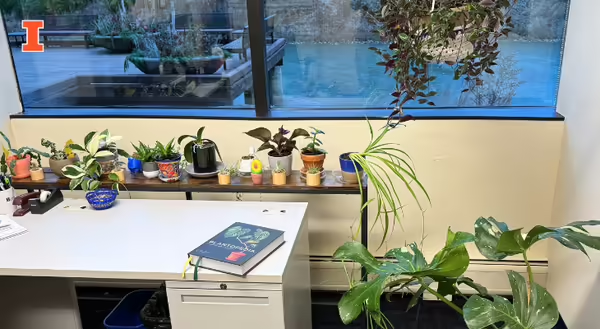
The weather has turned cold, and your gardens have gone to sleep. But your hands still long to touch the dirt and crave a little green in your life. Consider adding some houseplants to your space! With a bit of research and forethought, even the brownest thumb can keep their space a little greener.
The right formula
“But I can’t grow houseplants!” you cry. Anyone can grow a houseplant with the right formula. Unsurprisingly, it’s very similar to my mantra for outdoor plants—right plant, right place. Often when houseplants fail, it’s due to some combination of trying to grow a plant in the wrong lighting, the wrong soil, and/or with the wrong amount of water. Knowing your plant's needs before selecting it from the nursery will help it succeed. The first step is to assess your location. Do you have a sunny, south-facing window? Great! Plants that require bright, direct light will be happy there. But maybe your windows only get a little sun in the morning. Or the only spot for your new plant is away from the window. No worries. Look for something that likes lower light conditions. Similarly, understanding the watering requirements of your plant and checking the soil regularly can help make sure you don’t over- or under-water. I set reminders on my phone to help me remember to check them!
Beginner-friendly houseplants
There are a few plants that are frequently seen in homes and offices. These plants are not picky about light or humidity and do not require specialized care. They are also safe for pets.
With straight green and variegated varieties, spider plant, or Chlorophytum, can thrive in low light (though they prefer at least a little light), and require a moderate amount of water. As a bonus, they can propagate via offsets (the little babies hanging from the mother plant) so a friend or neighbor likely has some to share.
Wax plant, or Hoya carnosa., is another easy-to-grow plant. These require more light, but if you’re prone to forgetting about your plants, Hoyas don’t need as much water—just water thoroughly when you do. They also come in many different leaf sizes and shapes and even colors!
Another commonly seen houseplant is the snake plant or Dracaena. These long, spear-like leaves seem to thrive on neglect. In fact, they will bloom if they are pot-bound for long enough. They like coarse, sandy soil and little water. They prefer bright, indirect light, but also don’t seem to mind lower light conditions. Just note that if you have pets who like to chew on plants, this can be mildly toxic to them.
Can plants improve air quality?
An oft-cited study from NASA claims that houseplants can remove volatile organic compounds (VOCs) from the air, but can they really? In a real-world situation like your home, probably not to a measurable degree. While they do remove some carbon dioxide and may add a small amount of humidity to the air, our homes have enough air circulation that there is likely very little difference. However, research also shows that having plants in our spaces can lead to an improvement in mental health. So, if anyone tells you that you don’t need more plants, tell them it’s for your health!
For more information, visit extension.illinois.edu/houseplants and the University of Illinois Extension Horticulture YouTube Channel.
About the author: Jamie Viebach is the University of Illinois Extension Horticulture Educator serving DuPage, Kane, and Kendall counties. Viebach’s primary areas of expertise are native plants, landscaping, pollinators, and rain gardens.
Photo credit: Jamie Viebach, University of Illinois Extension